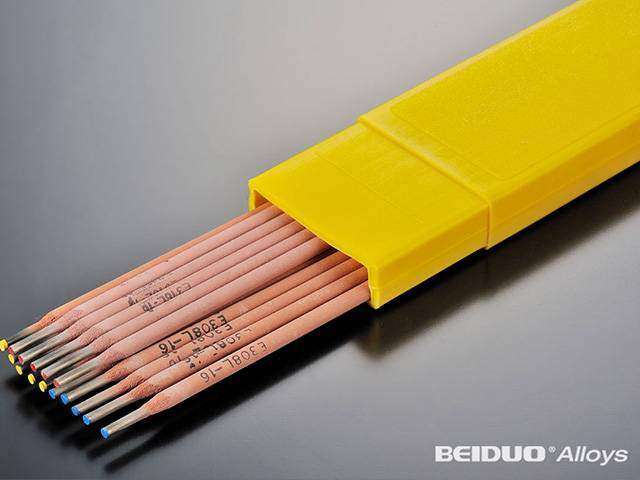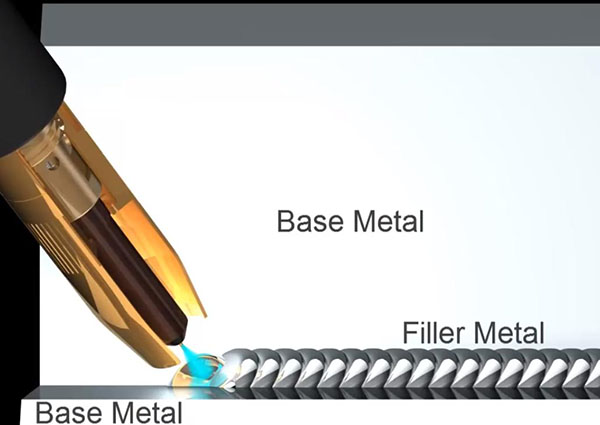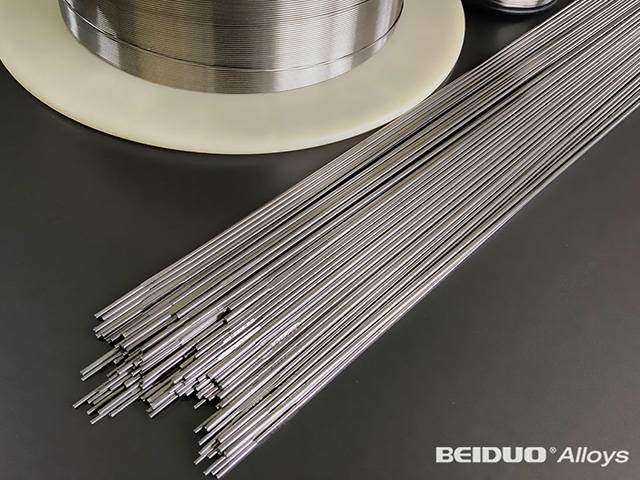Stainless steel welding
Stainless steel welding
Stainless steel welding requires a specific set of tools and techniques to ensure a strong and reliable weld. In this Blog, we will discuss the key components of stainless steel welding and the different types of welding wires and electrodes available. We will also answer the question of whether normal MIG wire can be used to weld stainless steel.
Stainless Steel Electrode
Stainless steel electrodes are typically used in shielded metal arc welding (SMAW) and gas tungsten arc welding (GTAW) processes. These electrodes are made of a steel core coated with a flux material that protects the molten weld pool from atmosphere contamination. Stainless steel electrodes are designed to create a strong and durable weld, with good resistance to corrosion and oxidation. They are available in a range of sizes and classifications, including E308 , E309 , and E316 .
Advantages of using stainless steel welding electrodes:
High strength and durability
Stainless steel welding electrodes offer high strength and durability, making them ideal for creating structures and components that withstand harsh environmental conditions.
Corrosion resistance
One of the most significant advantages of stainless steel welding electrodes is their corrosion resistance. They can withstand exposure to moisture, humidity, and other corrosive elements, which makes them ideal for use in marine and outdoor environments.
Versatility
Stainless steel welding electrodes are incredibly versatile and can be used in various applications across various industries, from construction to aerospace to medical.
Easy to maintain
Stainless steel welding electrodes require minimal maintenance and are easy to clean and sterilize. This makes them ideal for use in industries that require hygienic environments, such as the food and beverage or medical industries.
Cost-effective
While stainless steel welding electrodes may be more expensive than other welding electrodes, their high strength, durability, and corrosion resistance make them a cost-effective solution in the long run.
They require less maintenance and last longer than other materials, saving money on repairs and replacement costs.
Welding Techniques for Stainless Steel Welding Electrodes
Stainless steel welding electrodes are a popular choice for welding applications across various industries, from construction to aerospace to medical. But to get the best results, choosing the proper welding technique for the job is essential.
TIG Welding
TIG Welding Tungsten inert gas (TIG) welding is a precise and versatile technique ideal for welding thin materials, such as those used in the aerospace and medical industries. TIG welding uses a non-consumable tungsten electrode to create a small, focused arc that melts the metal and forms the weld.
This technique offers precise control over the heat input, which can help to prevent warping or distortion of the material. However, TIG welding can be time-consuming and requires a high degree of skill and experience.
MIG Welding
MIG Welding Metal inert gas (MIG) welding is a popular technique for welding thicker materials, such as those used in the automotive and construction industries. MIG welding uses a consumable wire electrode fed through a gun and melted to form the weld.
This technique is faster and easier to learn than TIG welding, but it can produce more spatter and may offer a different level of precision.
- Stick Welding Stick weldingStick Welding Stick welding, also known as shielded metal arc welding (SMAW), is a versatile and cost-effective technique commonly used in construction and manufacturing. Stick welding uses a consumable electrode coated in flux that melts and forms the weld.This technique is relatively easy to learn and can be used in various positions and on various materials. However, it can produce a lot of spatters and may offer a different level of control than TIG welding.Stainless Steel Welding Wire
Stainless steel wire in medical applications
Stainless steel wires are increasingly present in medical applications which rely on their attractive combination of corrosion resistance, durability and mechanical properties.
Stainless steel wire can be in various presentations (round, flat or shaped wire) and forms (mesh, braided, straightened cut lengths, cables). Main grades used are 302, 304, 316L.
Vascular therapy:
continuous improvements of medicine allow minimally invasive intervention through arteries and veins. Stainless steel wires are found in intra-arteria stents, angioplasty catheters, guide wires and diagnostic catheters, aneurysm clips, etc...
Orthopedics applications:
this broad field covers trauma, reconstructive, spinal & sports medicine. Stainless wires can be found in fracture fixations, spinal devices, nails, bone pins and screws, cerclage cables, suture wire.
Endoscopic medical devices: this fast growing field targets efficiency, comfort through minimally invasive procedures. Strands and cables made of fine stainless steel wires are used for: biopsies, gallstone removal, support of colonoscopy, retrieval of foreign objects in airways, laparoscopic surgery...
Orthodontics: this specific field of applications often uses shaped stainless steel wires for arch wire, self-litigating brackets, springs. Both the aesthetic and the mechanical properties of stainless steel are at work there… Related field of “implant dentistry” also makes use of stainless steel wire.
Surgical and diverse applications: Stainless steel wire is often used for post-surgery staples, suture wire and needles, stylets. Another important field of use of stainless steel spring wire is the spring mechanisms of syringes, medical or self-injection systems for diabetes, allergic reactions. Stainless steel wire is thus an important item in the increasingly diversified and fast growing medical field, in surgery, implants and sophisticated devices.
Stainless steel wire for Automobile Applications
Stainless Steel, a modern material in view of its attractive combination of mechanical and corrosion resistance properties, has found a large array of usages in the Automobile Industry, as to be expected in spite of its cost higher than regular steels. Stainless steel wire is used in very diverse applications as follows:
Automobile fasteners
fasteners is a generic wording for a range of parts used to link or fasten in place several components of a vehicle: this covers bolts, nuts, washers and rivets usually cold headed from stainless steel wire rod or drawn wire. .
Exhaust line
The development of use of stainless steel in car exhaust systems started in the USA and Germany in the 1980's with the catalytic converters, then spread out in all the Automotive Industries, with also usage in all components of the exhaust line from manifolds to tail pipes. The prevalent grade for pipes and converters shell is the low-grade 409 Ti; this has brought a large usage of grade 409Cb welding wire for the components of the exhaust line, as well as use of 409Cb large size wire for exhaust systems hangers.
Miscellaneous other automobile applications, as follows:
Air bag safety systems: knitted fine wire pads are used as filters to prevent damage of the air bag by residues of the explosive cartridge
Fine stainless wire braids as reinforcement/protection of fuel or brake hoses
Various stainless steel cables used in very diverse operative functions
Flat stainless steel wire for windshield wipers.
Thus, stainless steel wire is a widely used material, essential to Automobile safety, durability and performance
Stainless steel wire in aerospace applications
It is no surprise that Stainless Steel would indeed find many usages in Aeronautics/Aerospace domains. stainless steel wire, wire rope and wire mesh are found in many critical parts of aircrafts and primarily in the areas of fasteners (via cold heading) and aircraft cables, as follows:
Aerospace fasteners
fasteners is a generic wording for a wide range of parts used to link together several components together such as stringers, flanges, skins, ribs, stiffeners in the aircraft airframe and the engine mostly. Such fasteners are cold headed from wire rod or drawn wire into screws, bolts, washers, nuts and rivets. In view of the stringency of the applications, the wire rod or wire is frequently “shaved” to minimize the occurrence of surface cracks. Though regular grades are used, specific grades are prevalent in Aerospace, primarily A286 – grade 660 / ASTM A453,which combines good corrosion resistance with excellent creep resistance up to 700°C.
Aircraft cables
aircraft cables are obviously of primary importance to safely provide the essential functions of controls in aircraft for wing flaps, landing gear, as well as adjustable head-back on passenger seats, etc.Note also other applications such as helicopter hoists for cargo loads or rescue .These cables are made of wire ropes stranded from 304 and preferably 316 wires.
Flux Core Stainless Steel Welding Wire
Deposition rate
Deposition speed refers to the amount of metal deposited on the weldment per unit time in the process of fusion welding. Flux-cored wires fuse faster than solid electrodes because they allow a larger welding current to be used (shown below). Compared with solid cored wire, because its current is concentrated on the outer steel surface, offering a large current density and larger resistance heat generated; In addition, the flux-cored wire has a small splash, and its molten metal can be more efficient into the pool.
Welding efficiency
Flux-cored wire can be continuously automated and semi-automated production, which greatly saves the time of changing electrode, arc starting and arc closing and other auxiliary processes. Compared with solid wire, flux-cored wire welding spatter less, weld forming, reduce the time of cleaning spatter and repairing weld surface, not easy to plug the nozzle, which is more suitable for robot welding compared with CO2 solid cored wire.
Welding thicker materials
Flux core welding wire is ideal for welding thicker materials, as it has a higher deposition rate than solid wire.
Welding in challenging to reach places
Flux core welding wire can be used in difficult-to-reach areas, as it does not require an external gas supply.
Welding in high winds
Flux core welding wire is also suitable for high winds, as the flux protects the arc from being blown out.
Can You Weld Stainless Steel with Normal MIG Wire?
The primary difference between stainless steel and regular MIG wire is that regular MIG wire is made of a combination of iron, carbon, manganese, silicon, and chromium. In contrast, stainless steel is made of iron, chromium, nickel, and other elements. The higher chromium concentration in stainless steel makes it more resistant to corrosion than regular MIG wire.
Some steps must be followed when welding with normal MIG wire on stainless steel to ensure a successful weld:
1.Ensure your base material is clean before welding, as dirt or rust can cause problems later.
2.Preheat the metal to reduce warping during cooling and prevent cracking during welding. It’s also essential to select an appropriate filler metal for your particular application; for example, if you’re welding thick material, then use a thicker filler metal such as 309ss, whereas thinner materials require thin filler metals like 316ss.
3.Pay attention to your amperage settings; too low and your weld won’t penetrate appropriately, while too high can cause spatter or burn-throughs!
While normal MIG wire can technically be used to weld stainless steel, it is not recommended. Stainless steel requires a specific type of wire that is designed to produce a strong and reliable weld, with good resistance to corrosion and oxidation. Normal MlG wire does not have these properties and can result in a weak and unreliable weld that isprone to corrosion and oxidation.
Can You Stick Weld Stainless Steel to Mild Steel?
Use 309 ss welding wire
When performing a stick weld between stainless steel and mild steel, it is important to use a filler rod made from 309L stainless steel. This type of filler rod is specifically designed for welding dissimilar metals, such as stainless steel and mild steel, together. The 309L filler rod should be used with an E309 electrode that has low carbon content and provides good corrosion resistance when exposed to outdoor environments.
Pre-heating
It is also important to note that when performing a stick weld between stainless steel and mild steel, the base metal should be heated up first with an oxy-acetylene torch before using an arc welder. This will help ensure that the two metals are at similar temperatures before attempting the welding process. Additionally, pre-heating can help prevent cold cracking or other issues associated with welding dissimilar metals together.
Clamp
Once both pieces are heated up, they should be clamped together securely before commencing the welding process. This will help provide a good connection between both pieces, which ensures a good-quality weld joint when finished. During the arc welding process, it is important to move slowly and steadily so that there are no gaps in your weld joint, as well as to ensure proper penetration into both pieces of metal being joined together.






